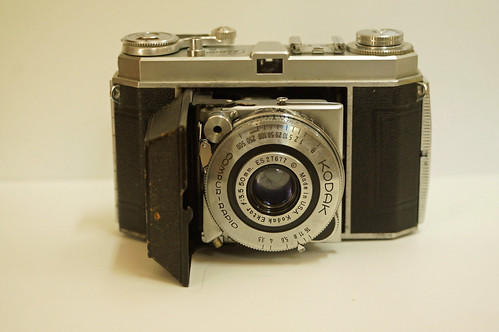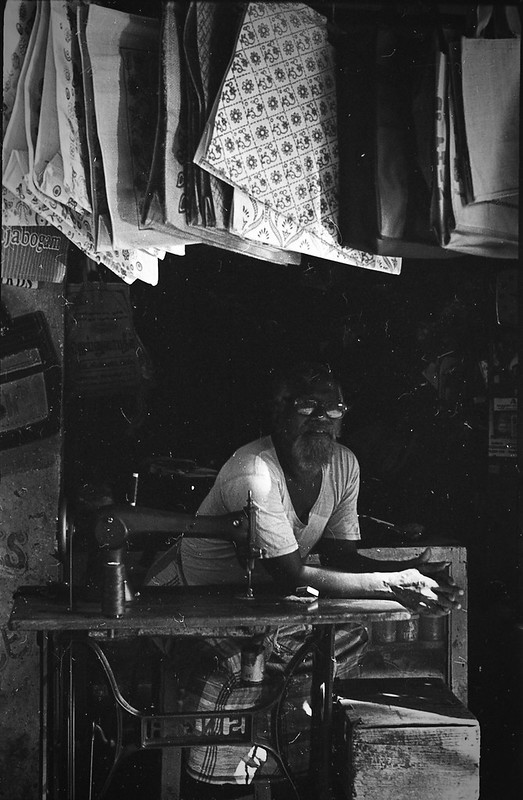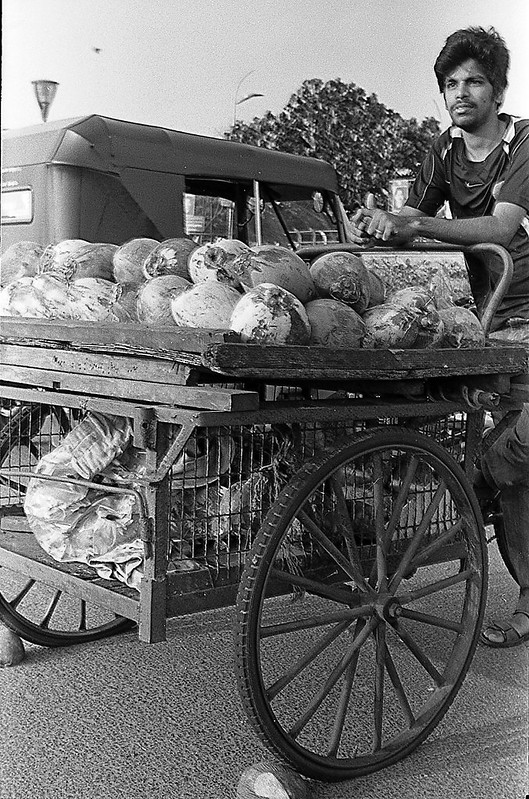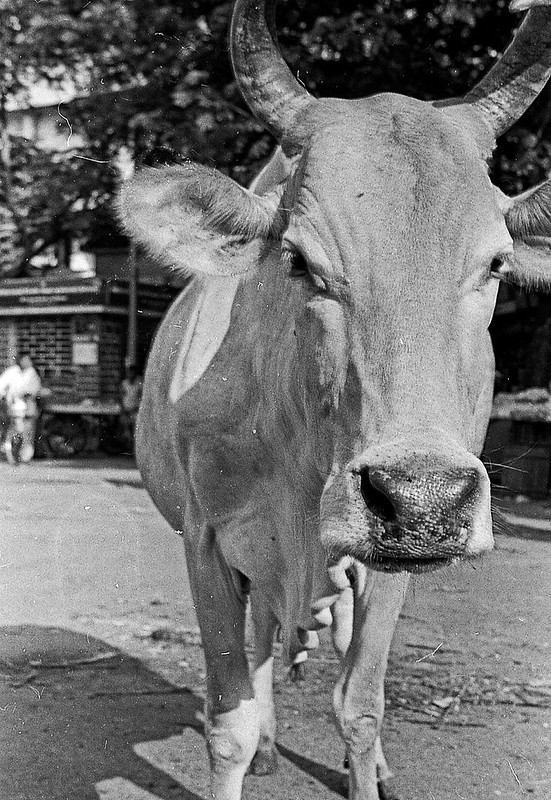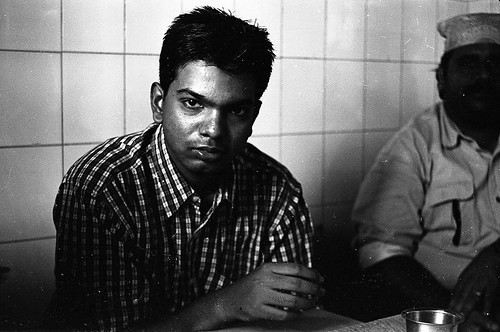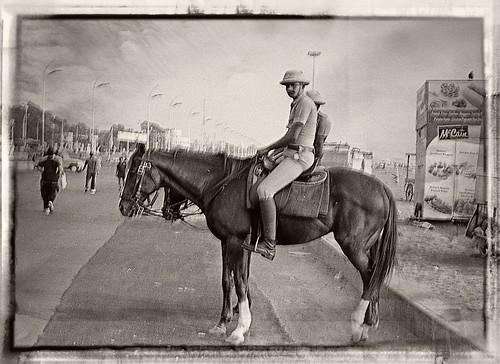In today’s world of camera that are fully automatic, and only the hard-core photographer bothers to worry about and understand concepts such as aperture and ISO, managing to get decent photos from a camera where you must set everything manually can be fun and rewarding. So I loaded my newly-received Retina with a 36-exposure roll of TX-100 film and set out early on a Saturday morning at Chennai’s Marina Beach.
The Kodak Retina 1a is a 35mm film camera that was manufactured by the German Kodak AG (Stuttgart) in the early 1950s, although there are people who believe it was already on the market in 1949. It’s a pretty sophisticated camera for its time, having sold for the equivalent of about $800 in today’s dollars – and about 140,000 people bought one. It’s fully manual – you have to set the aperture, shutter speed, and after estimating about how far away your subject is, turn the focus ring to the correct distance. The larger the aperture, the more critical it is to get this right, because the “in focus” zone gets progressively smaller.
All of the controls and moving parts are elegantly put together in an attractive package. It has an odd feature I haven’t seen in any other camera; just behind the shutter release (on top of the camera) there is a small silver button which, when pressed, allows you to continue to advance the film without taking a picture. Apparently back in the day it was common to change films in mid-roll, and this was the purpose of the button. According to the manual, you would note which picture you were on, and then wind the film back into the cartridge. Normally, the lever on top lets you advance one frame and then it stops (so you don’t waste film) But with this camera, you can switch to a different roll, and then later re-insert the first roll again, and use the silver button to wind the film back to the point where you left off.
Only I discovered during my test that mine doesn’t work properly. On my camera, what happens is you use the film advance lever to move the film to the next frame, and it gets stuck sticking straight out the right side of the camera. Then, when you look through the finder and press the shutter button, the lever snaps back into place, popping you in the eye! Consequently, I started out with pictures that were either blurry (because I jerked the camera), or pictures that are improperly framed (because I stopped looking through the finder altogether). Finally I figured out that pressing the button would release the lever, and then I could take pictures normally. Until the next frame.
Despite this anomaly, I was very pleased with how well the photos turned out. This is a great addition to my collection.
This one is just a tad dark. This guy makes a living selling the cloth bags he makes with his sewing machine. They’re all originals.
Another way you can make a living is by selling refreshing coconut milk. They will hack off the top with a machete, drop it in a straw and hand it to you while it’s still cool. Doesn’t taste very good, in my opinion – but each to his own.
Cows are, of course, everywhere in Chennai. But it’s rare to capture one this well in focus. And definitely not with a 65-year-old camera!
I always ask moms and dads for permission, and they always say “yes” with a big smile. The problem is when they ask to see the photo I’ve taken, and they stare uncomprehendingly when I tell them it’s a film camera…
I don’t have a lot of experience with portraits, but I like how this one turned out! I’m not sure if there is dust on the camera, or on the lens, or in my developer causing the tiny white spots in the photo.
Finally, one of the shots that came out blurry. This policeman stood so proud and silent until he noticed me taking a photo, it was a shame to delete it. So instead I added some effects to make the blur less obvious.


